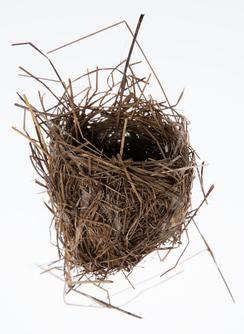New Zealand fernbird facts for kids
Quick facts for kids New Zealand fernbird |
|
|---|---|
 |
|
| Conservation status | |
| Scientific classification | |
| Genus: |
Poodytes
|
| Species: |
punctatus
|
| Synonyms | |
|
Bowdleria punctata |
|
The New Zealand fernbird, often just called the fernbird, is a small bird found only in New Zealand. It loves to eat insects! In the Māori language, people call it kōtātā or mātātā.
Contents
What is a Fernbird?
Naming the Fernbird
In 1832, two French scientists, Jean Quoy and Joseph Gaimard, first described the New Zealand fernbird. They found a fernbird specimen in Tasman Bay / Te Tai-o-Aorere on New Zealand's South Island. They gave it the scientific name Synallaxis punctata.
Different Types of Fernbirds
There are five different kinds, or subspecies, of the New Zealand fernbird:
- B. p. punctata (South Island fernbird)
- B. p. vealeae (North Island fernbird)
- B. p. stewartiana (Stewart Island fernbird)
- B. p. wilsoni (Codfish Island fernbird)
- B. p. caudata (Snares fernbird)
There was once another related bird called the Chatham fernbird (Poodytes rufescens). Sadly, it became extinct around the year 1900. Some people thought it might have been another type of New Zealand fernbird.
How to Spot a Fernbird
The New Zealand fernbird has a rich brown color on its back. Its belly is white. You can see brown spots on its throat and chest. Early settlers called it the "swamp sparrow" because of its colors.
Its tail feathers are thin, dark brown, and look a bit like spines. These birds grow to about 18 cm (7 in) long. But almost half of that length is just its tail!
Fernbird Life and Habitat

The New Zealand fernbird usually stays on the ground. It doesn't like to fly much. It mostly travels by walking or by taking very short flights, usually less than 15 meters.
In the 1800s, a scientist named Buller said it was "one of our most common" birds. However, its home, the wetland areas, has been greatly reduced since European settlers arrived. Because of this, the fernbird is now quite rare.
Nesting and Reproduction
Fernbirds build their nests close to the ground. They use sedges or other plants. Their nest is a deep, woven cup made from dried rushes. They line it with soft feathers.
Fernbirds lay eggs from September to February. They usually have 2 to 3 eggs in a clutch. The eggs are pinkish-white with brown or purple speckles. The Māori saying "te whare o te mātātā" means "a fernbird's house." It describes a woven flax cape that keeps out bad weather. This shows how well-designed and strong the fernbird's nest is!
Fernbirds in Māori Culture
The Māori people thought the fernbird was a very special "oracle" or "wise bird" (Manu tohu). They believed the bird's calls could tell them if their daily activities, like fishing, would be successful or not. More seriously, its calls could also predict good fortune and health, or even disaster and death.
See also
 In Spanish: Yerbera maorí para niños
In Spanish: Yerbera maorí para niños


